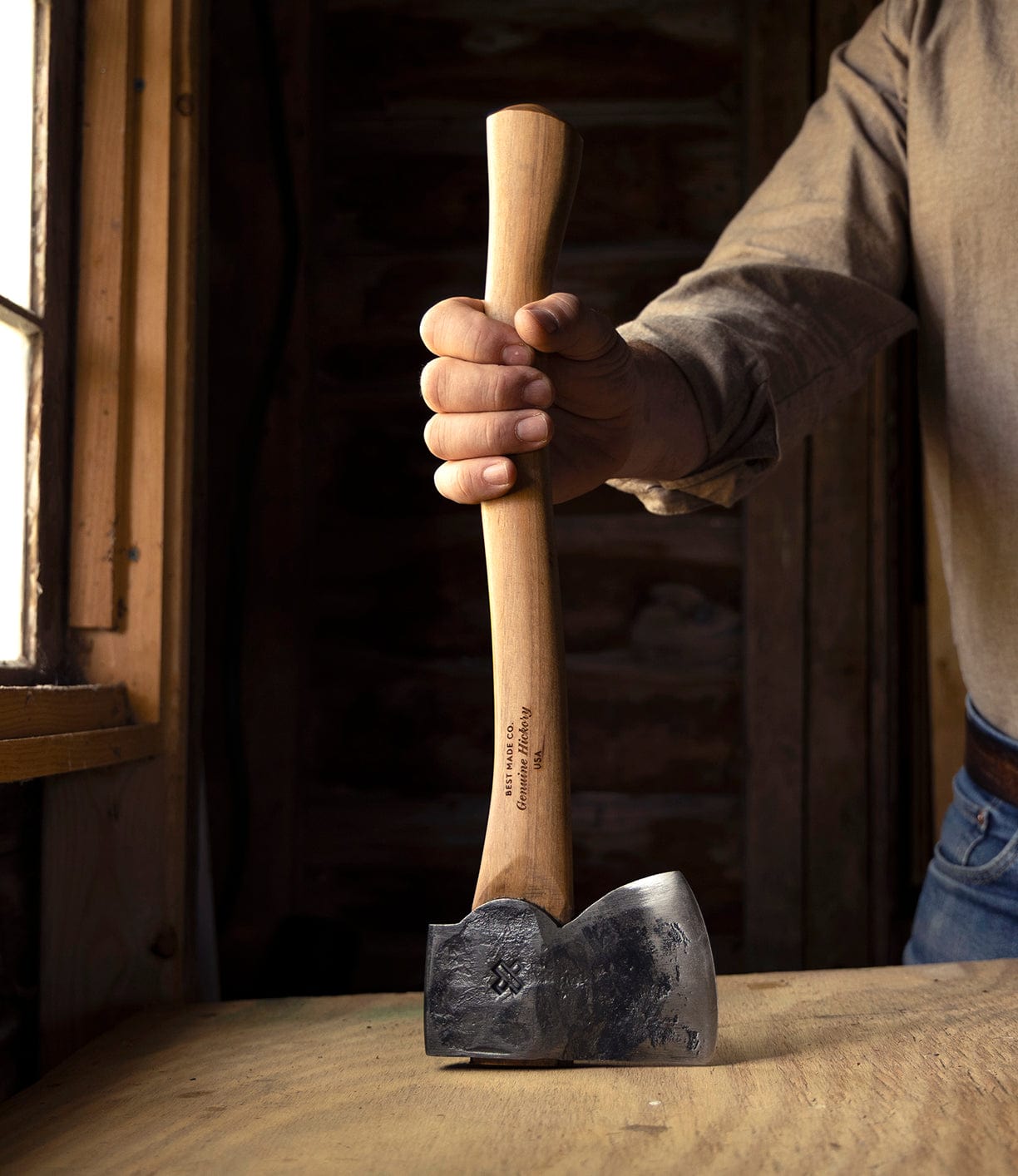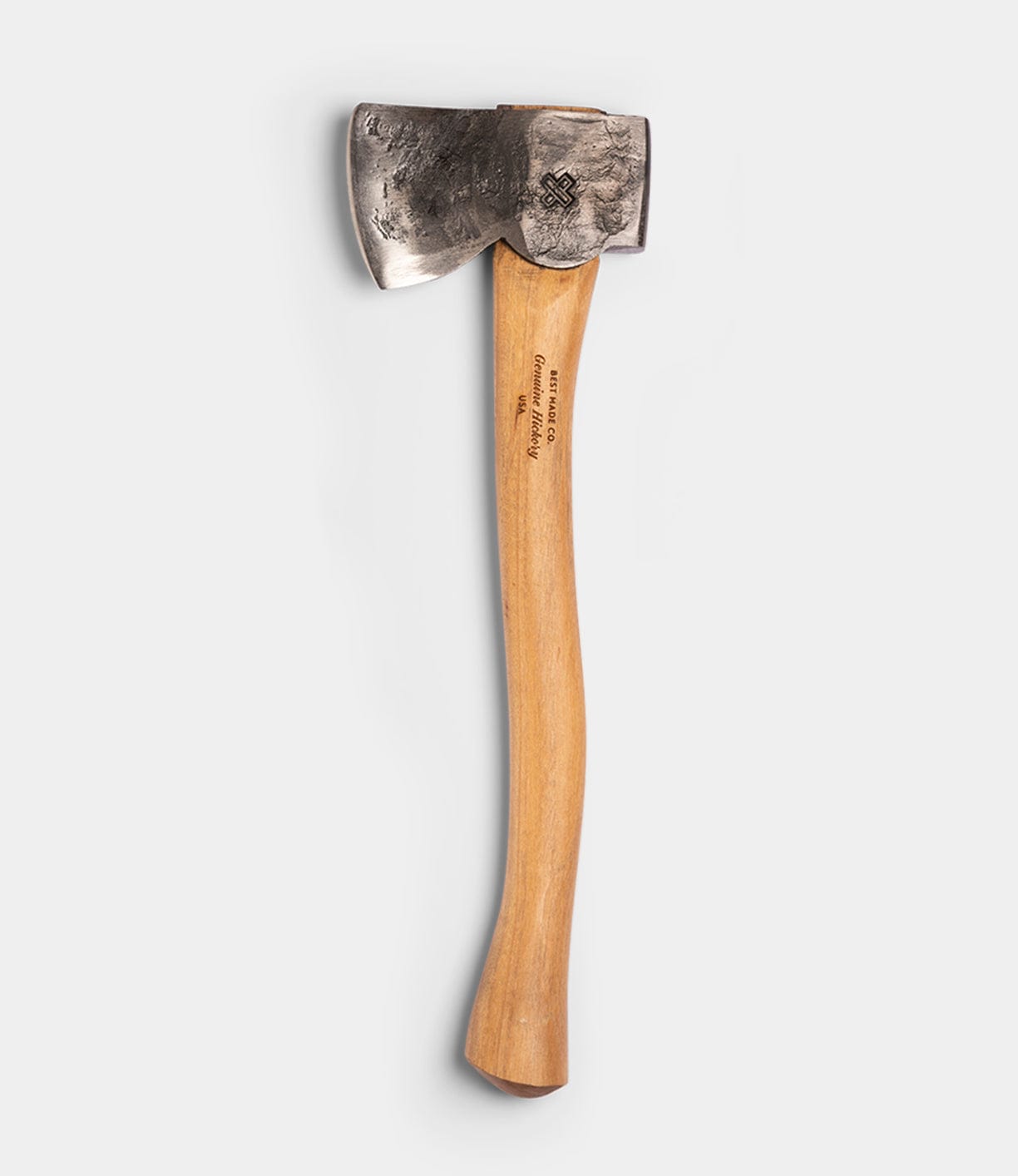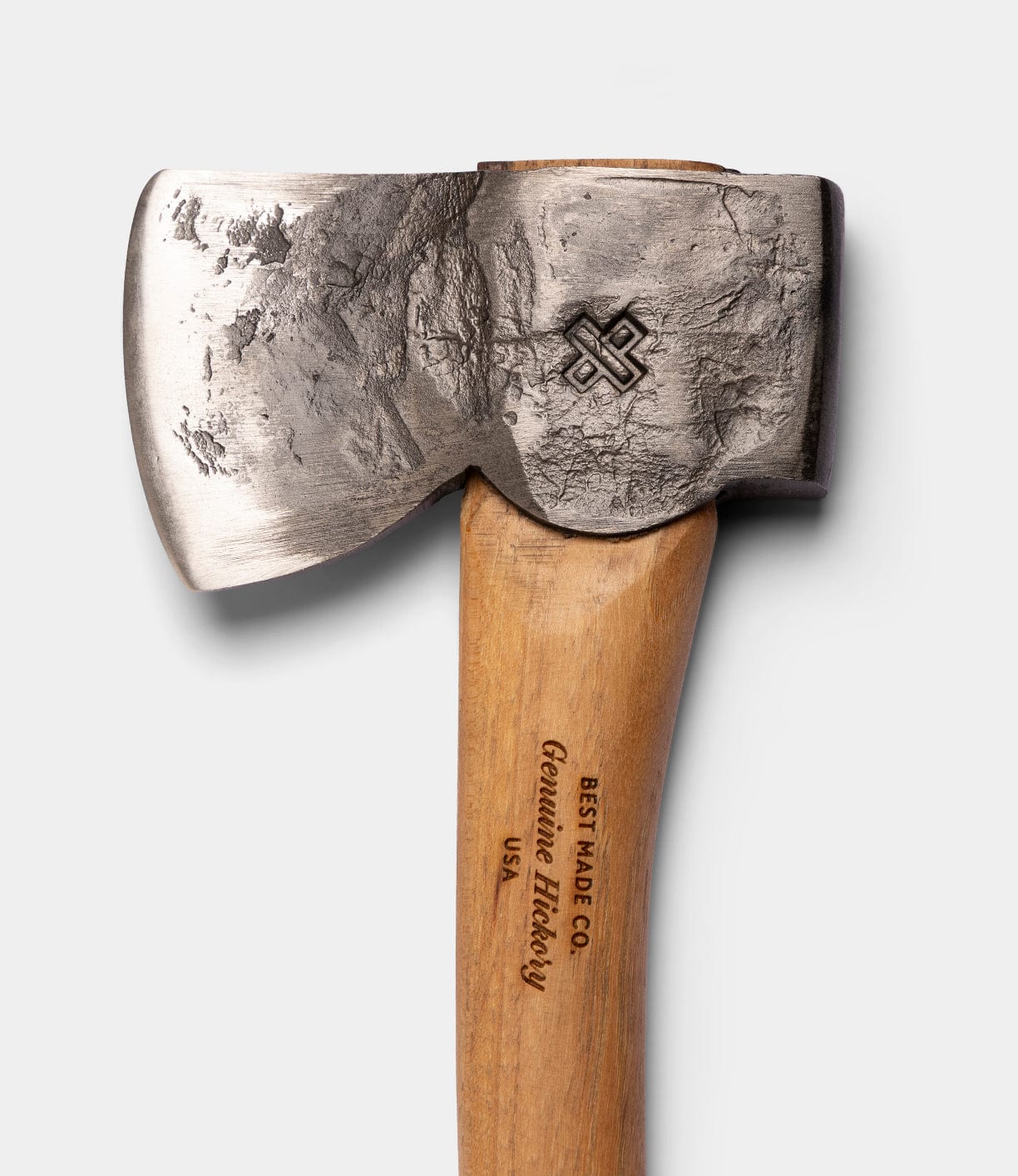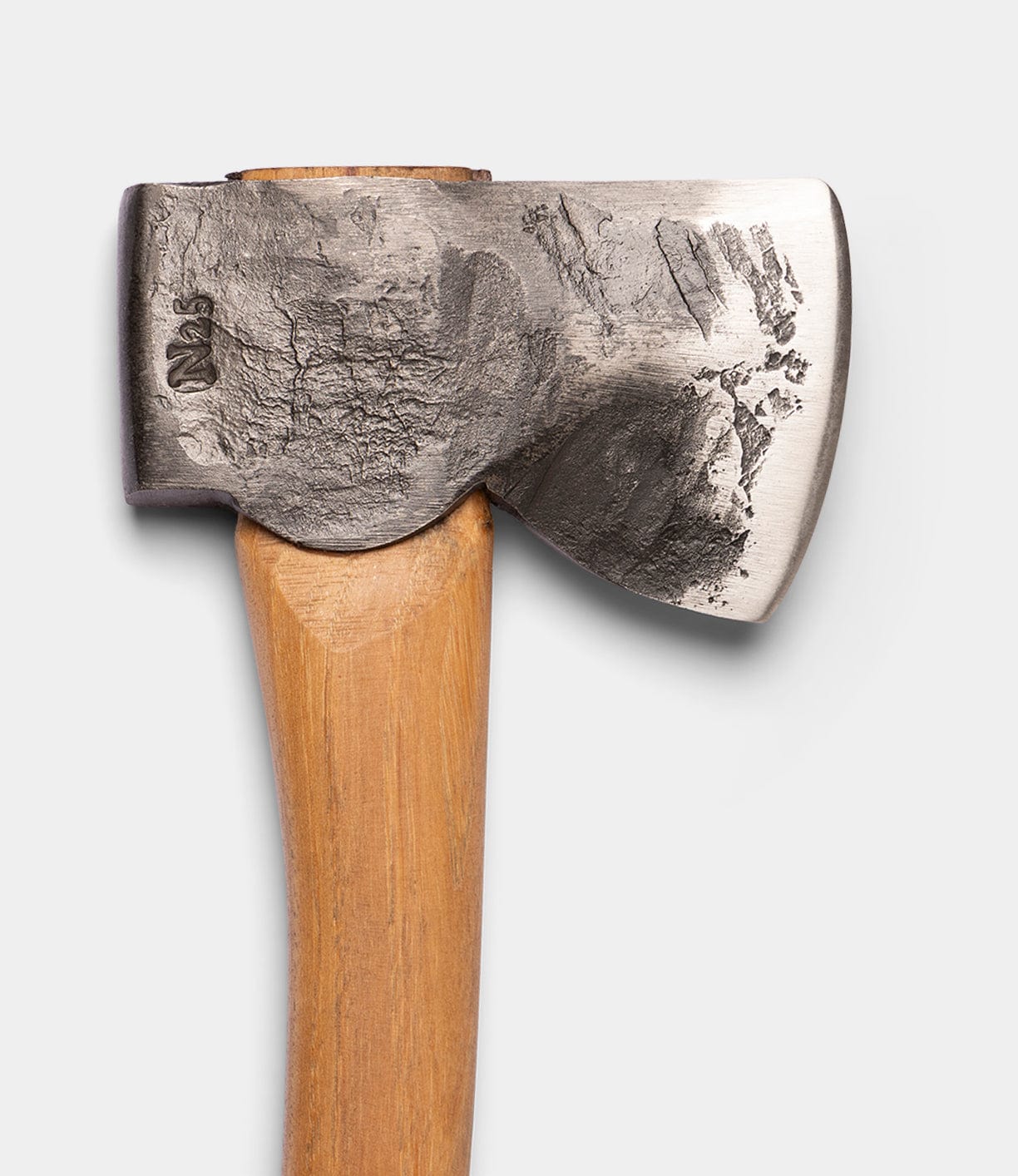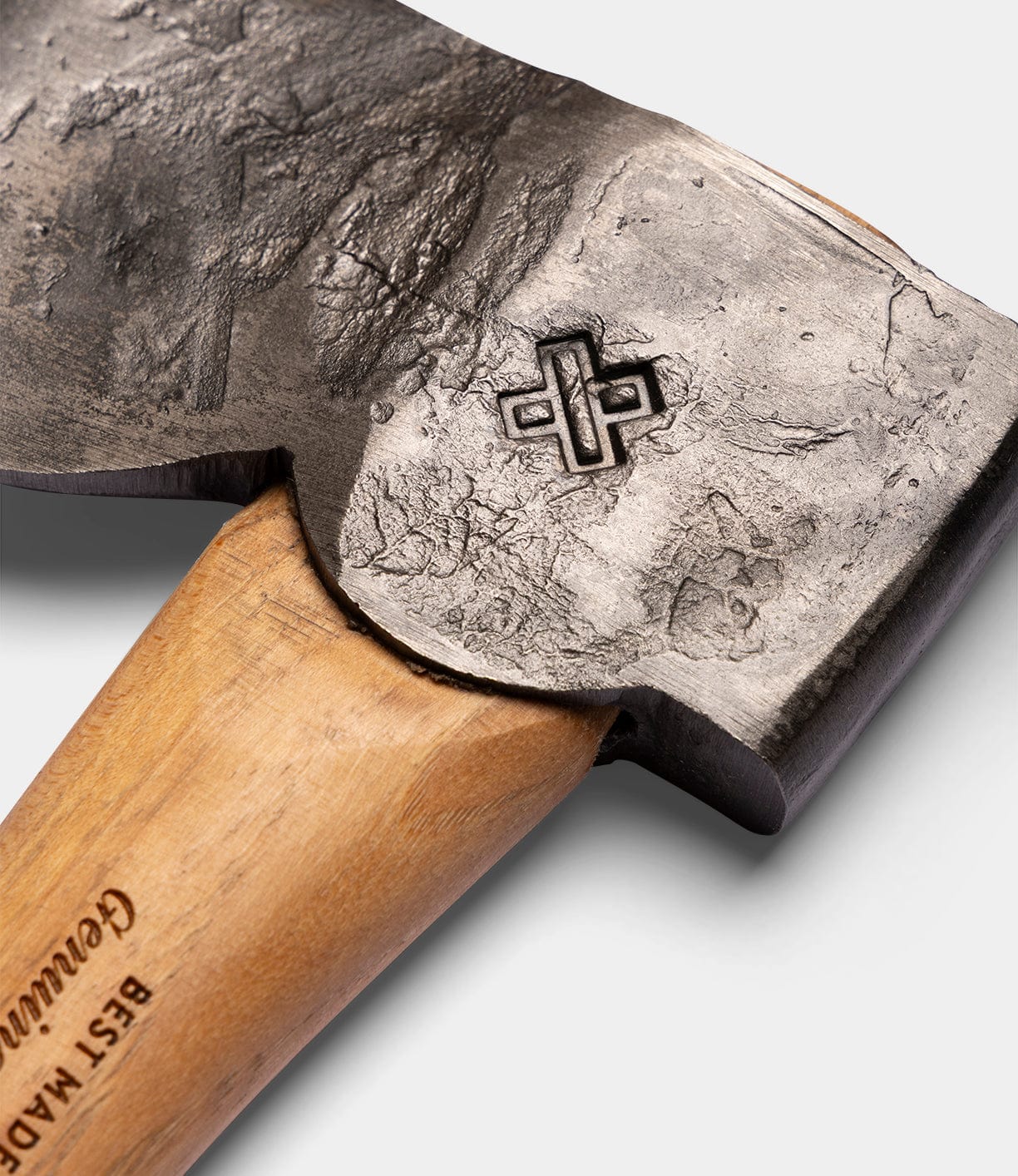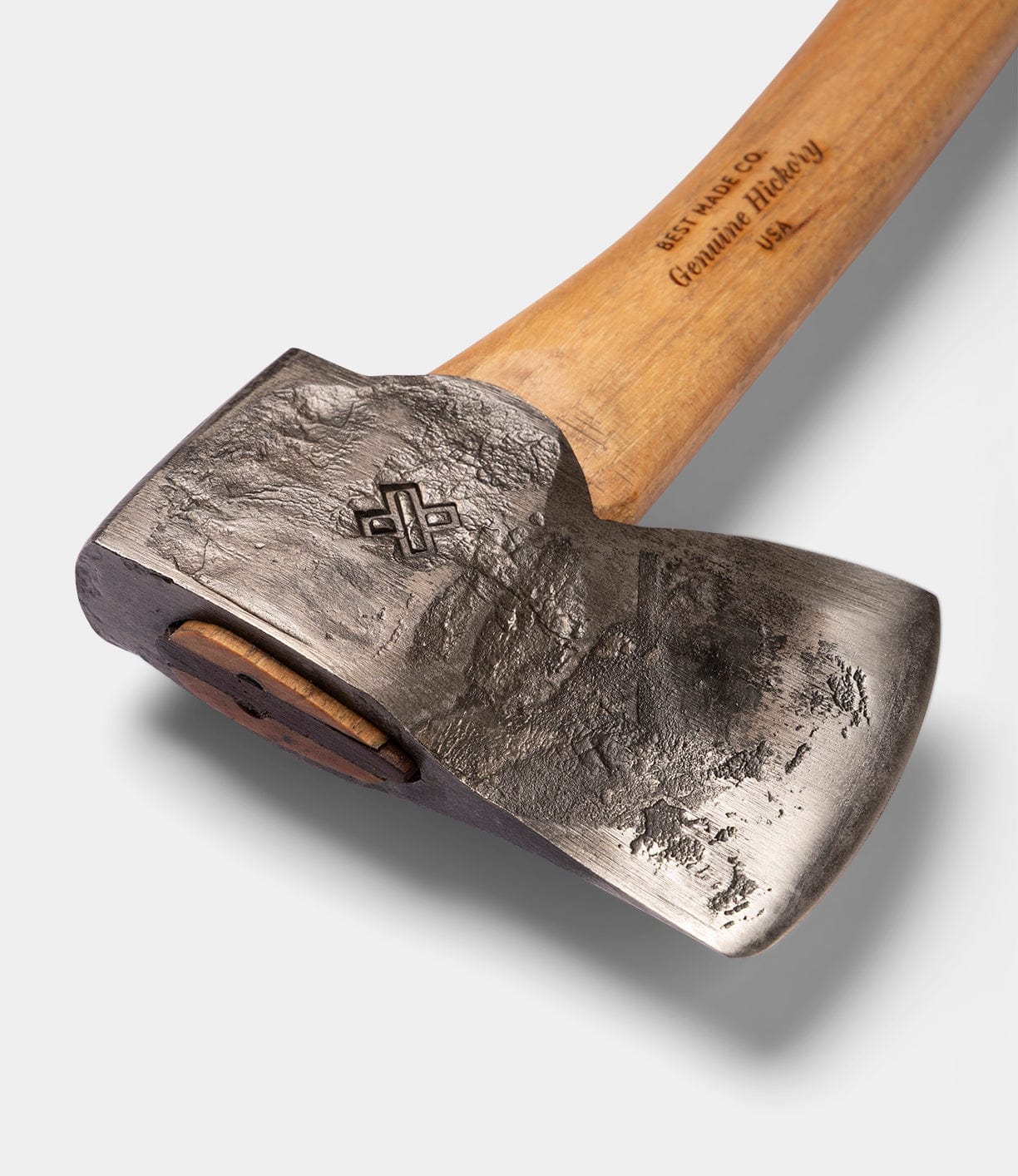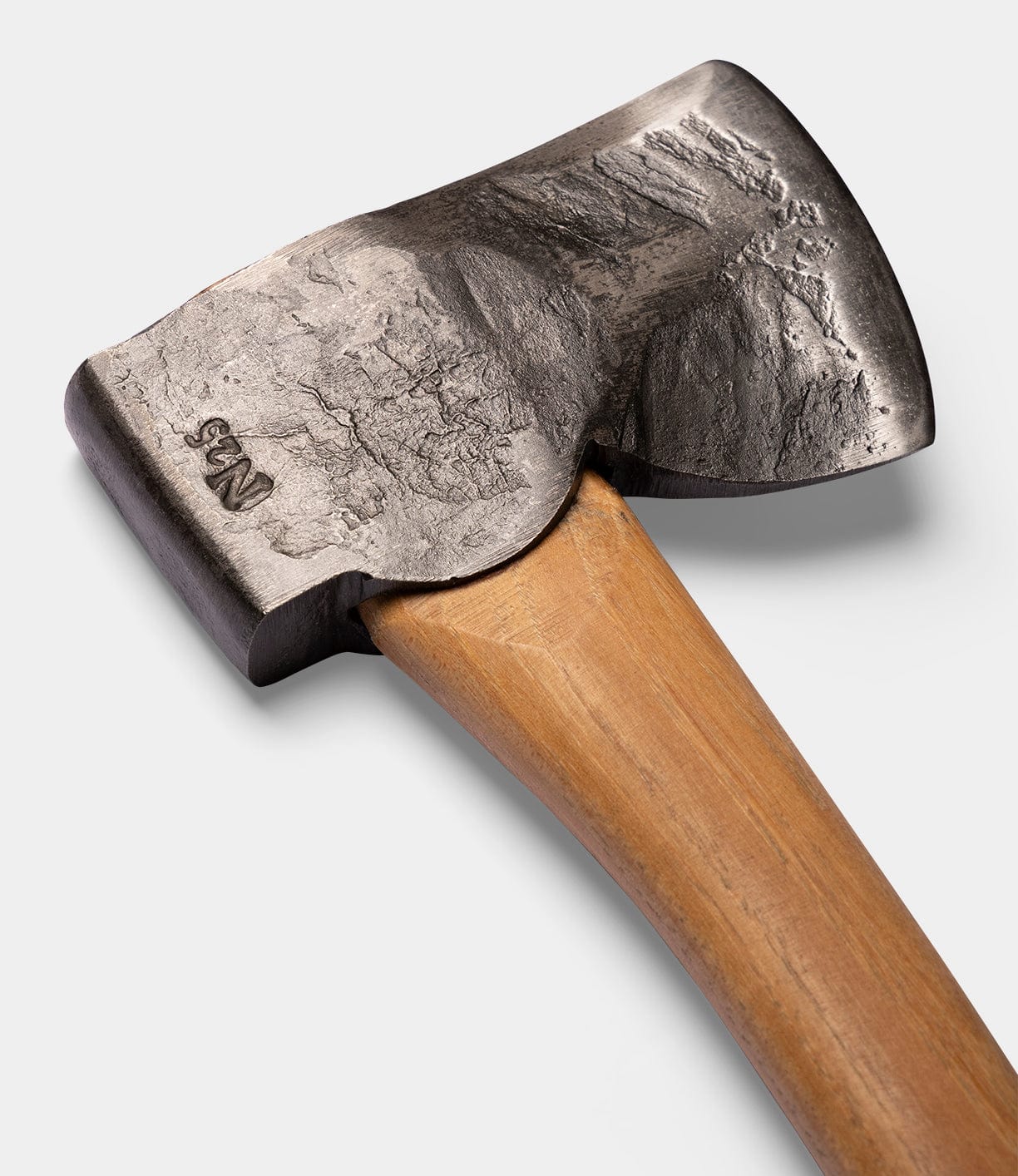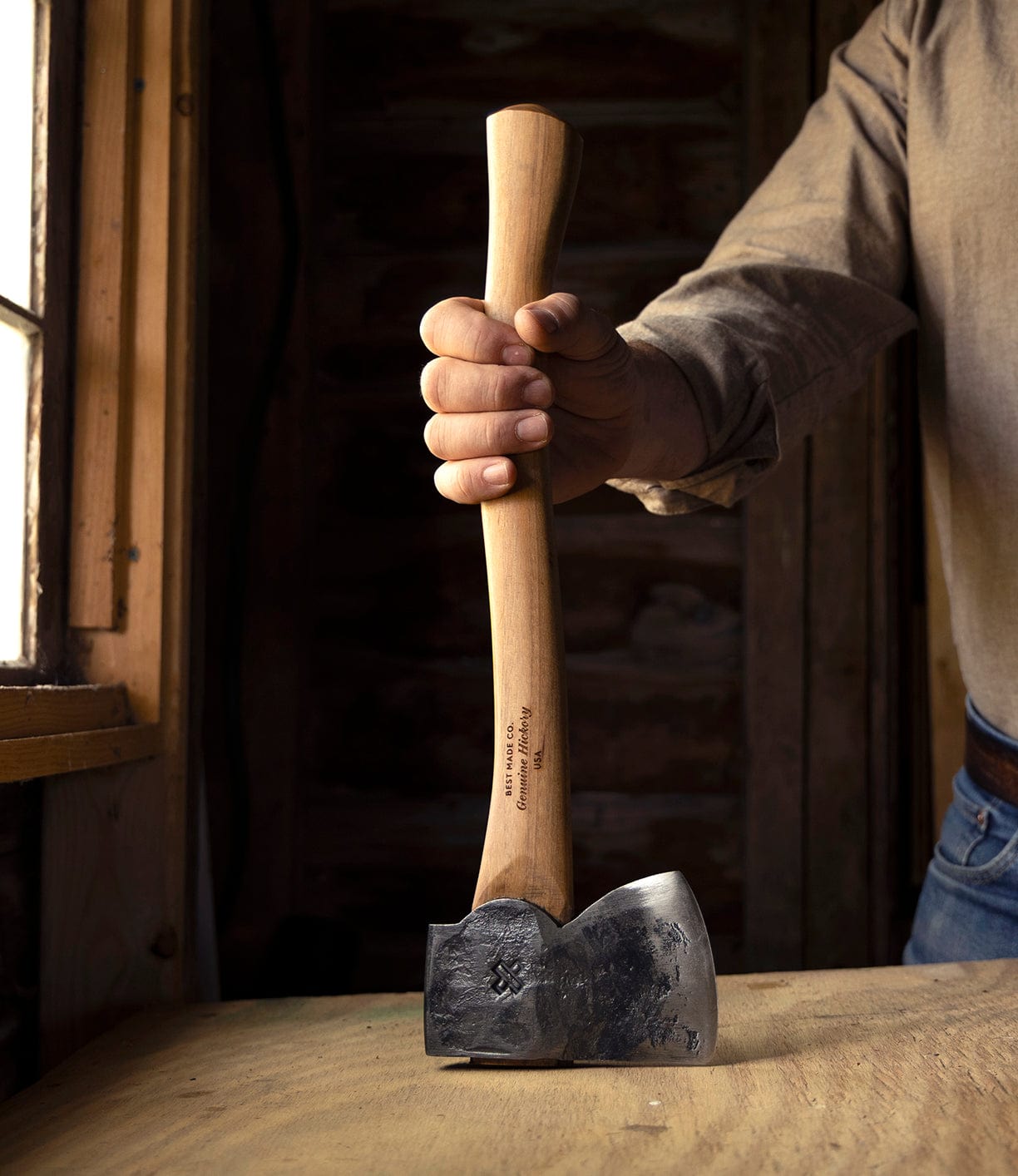
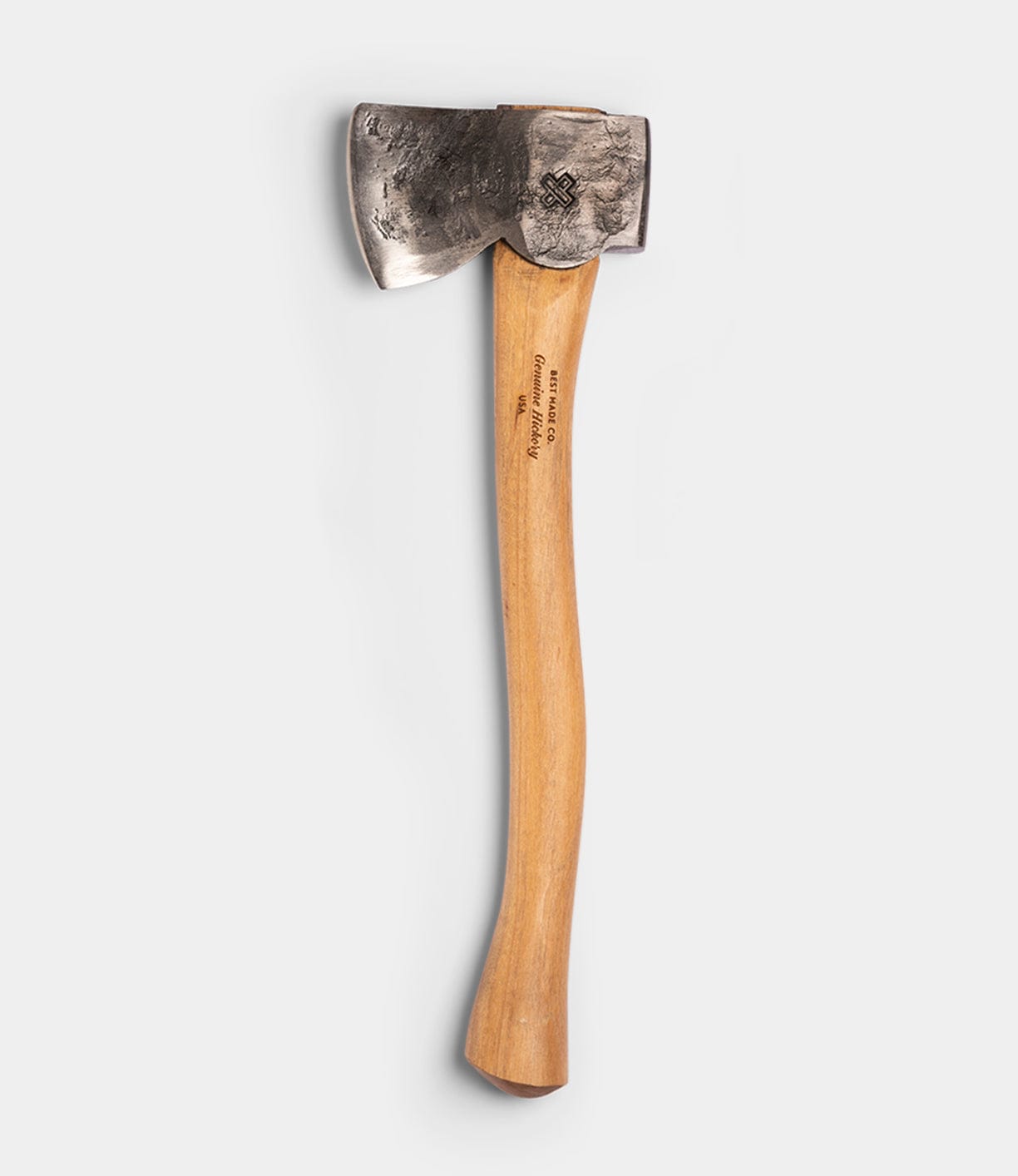
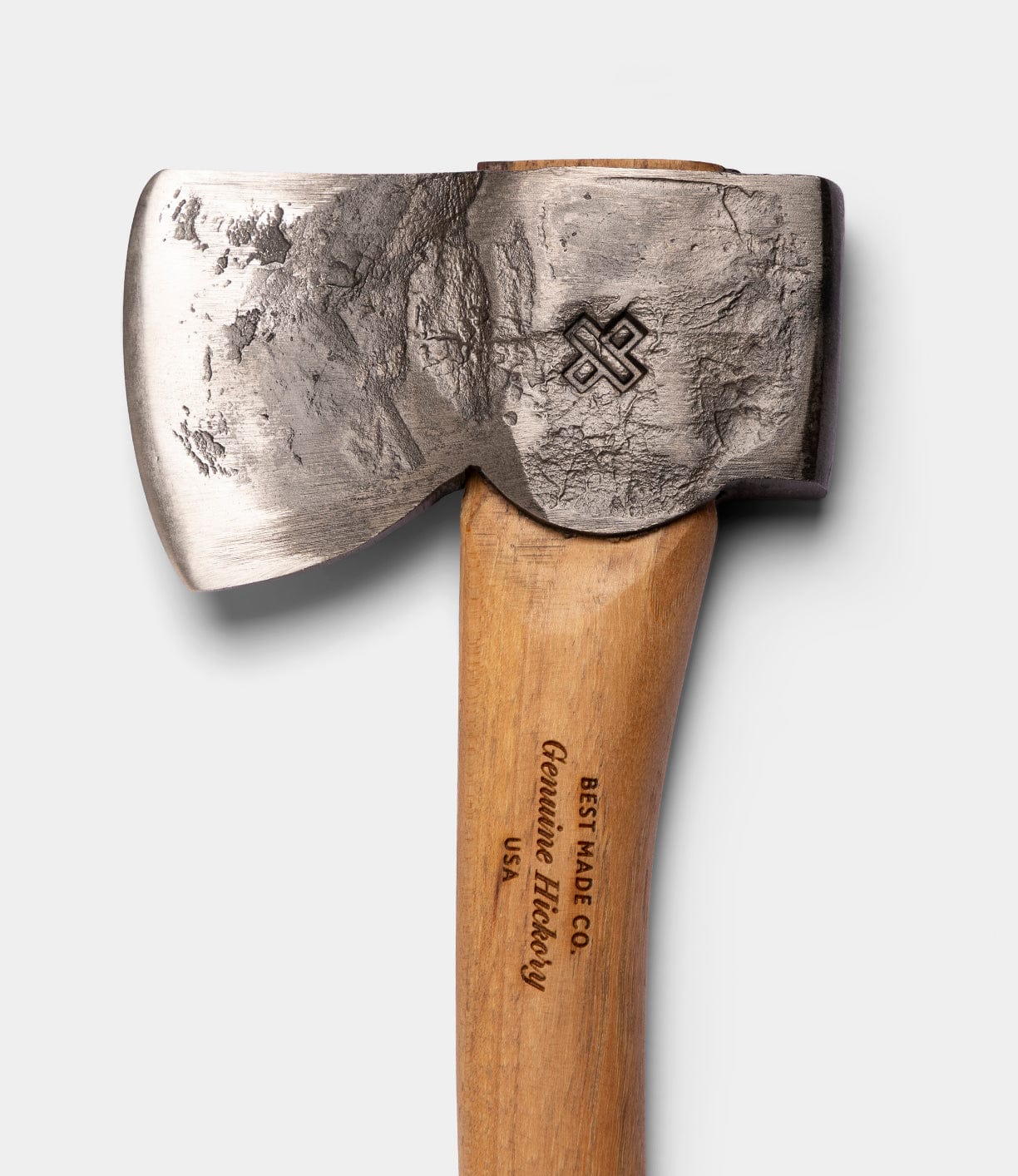
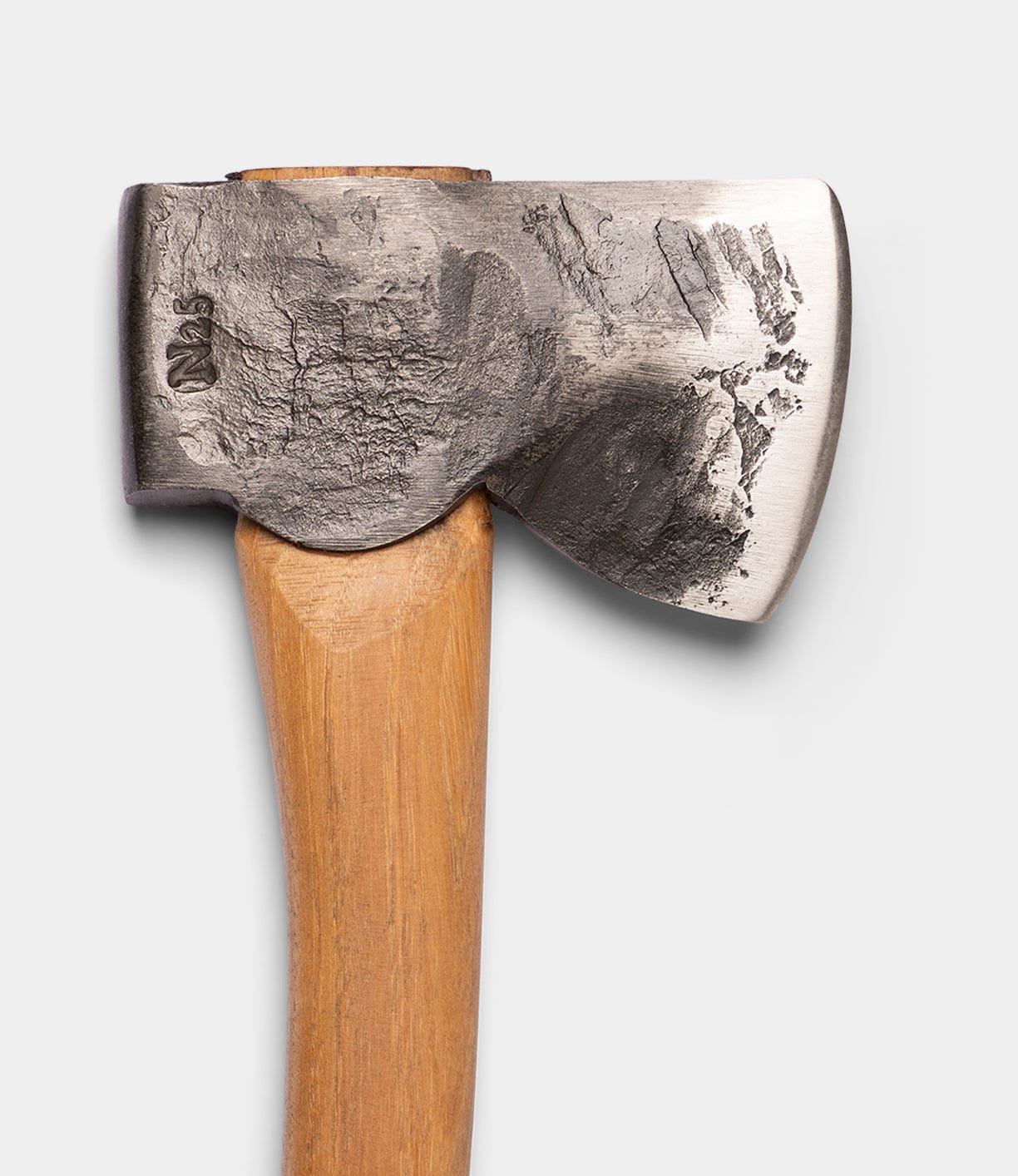
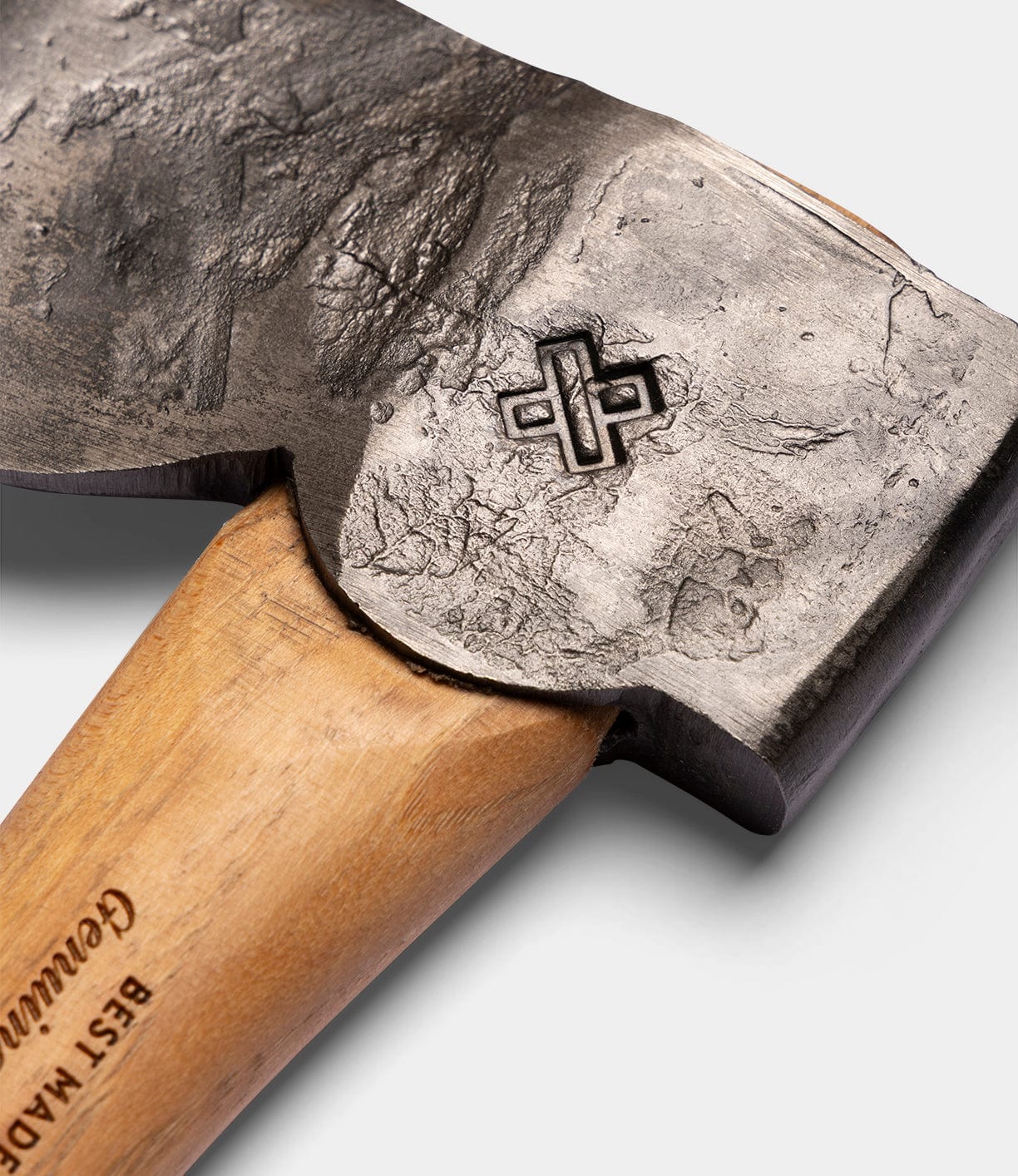
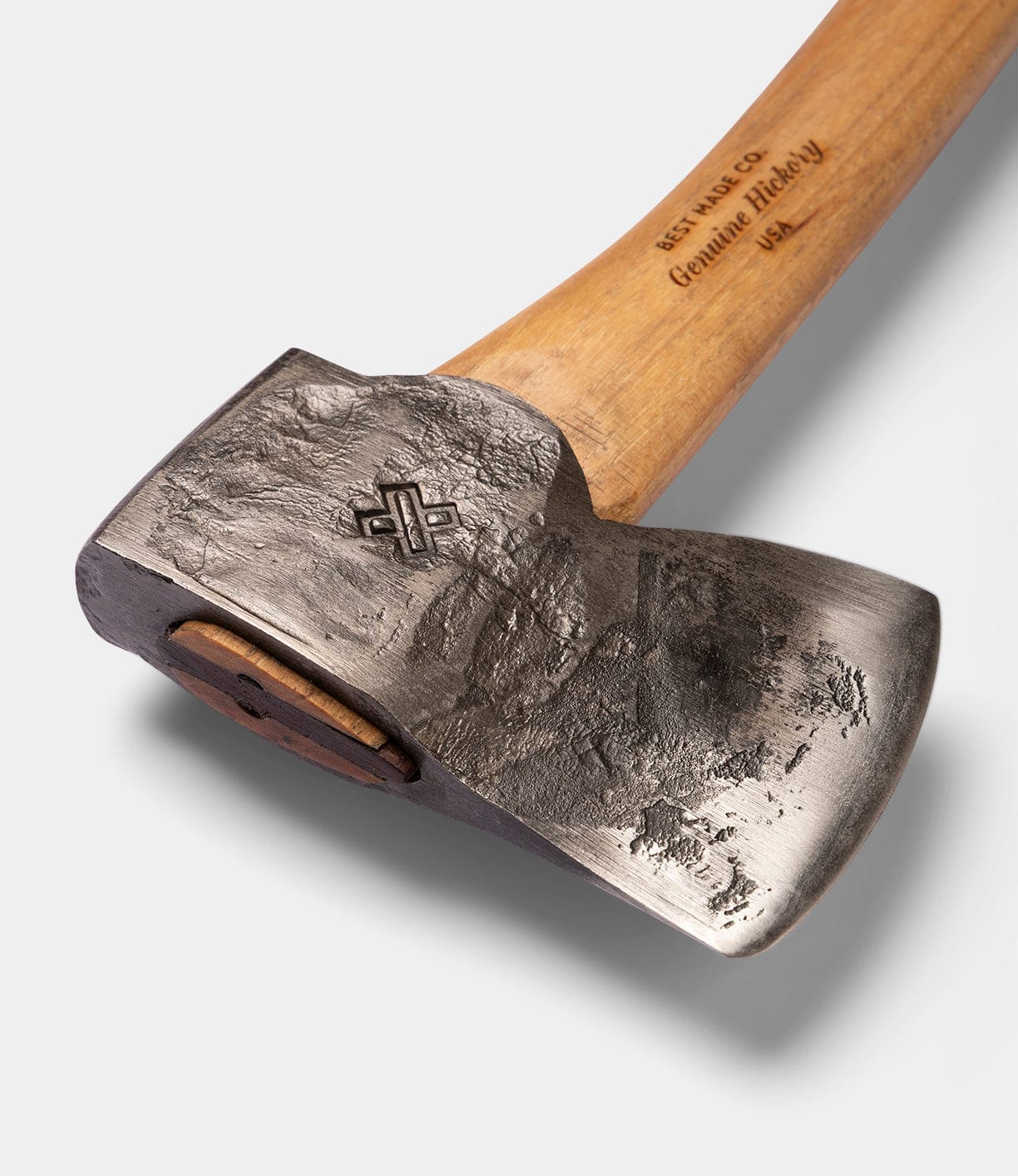
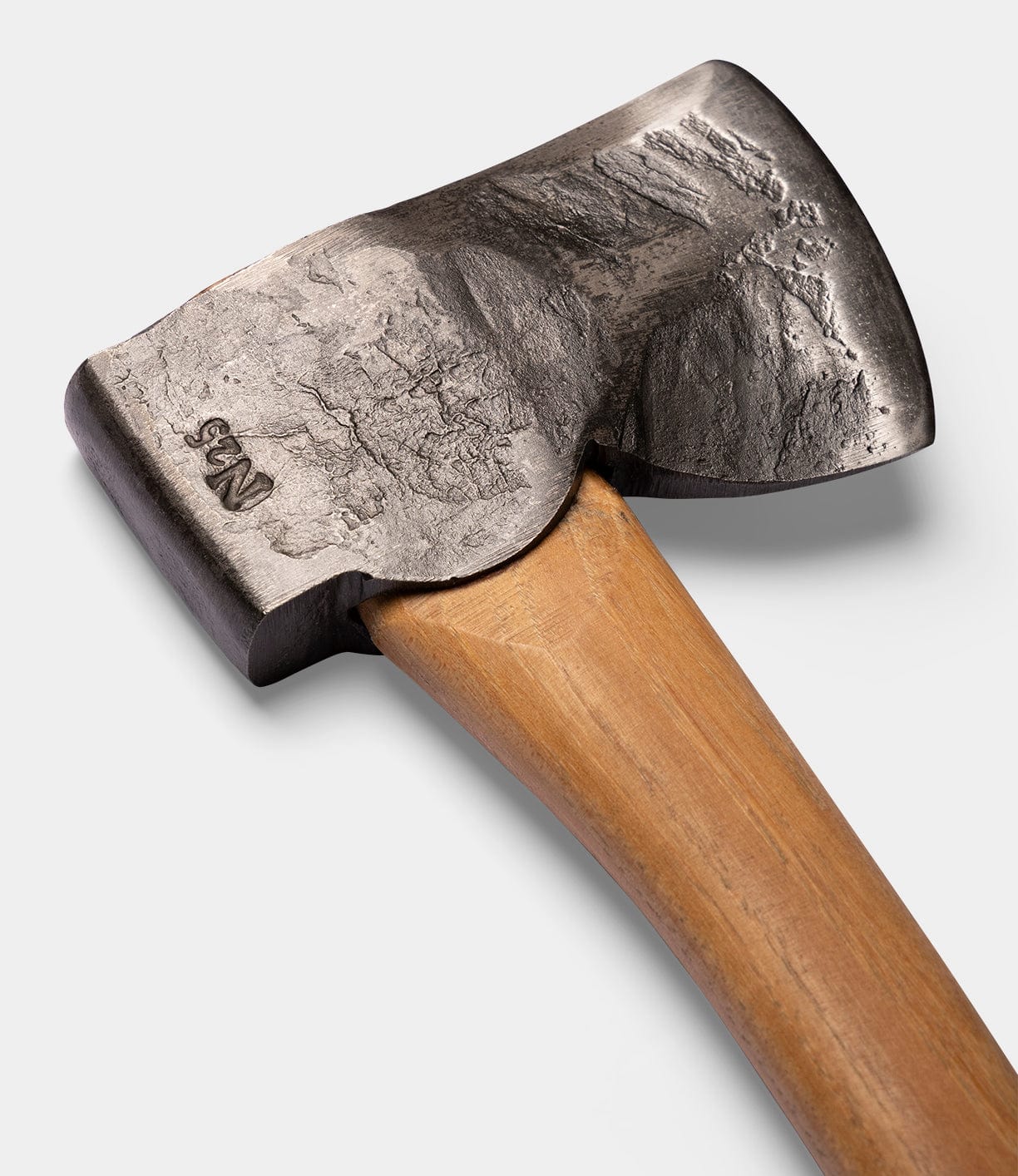
Relaunching Best Made raised many questions, chiefly: where to begin? The axe wasn't a guaranteed starting point until our founder met Nathan Brandt. After announcing the reacquisition, Peter received an email from Anderson, Indiana. The sender wanted to make the next Best Made axe. One phone call later and Peter was driving west to meet him. At the time, Nathan Brandt's main business, Coal Iron, produced forging equipment for axes, knives, and tools. A skilled blacksmith by trade, Nathan wanted to return to the forge and make axes solely for Best Made. They spent an afternoon discussing the possibilities. And Peter left knowing he had a partner and exactly where the next Best Made would start.
Nathan and Peter work closely on the research, design, materials, and features that define all our axes. Nathan guides every step of the manufacturing process. Each hatchet is forged by hand, the 5160 high-carbon steel is tempered to a Rockwell Hardness of 55-58 HRC. The visible forging marks give each hatchet its "forge-finished" character. And like our full-size axes, The Spark bears our trademark X and Nathan's initials, deep-stamped in its head. Each hatchet is ground and sharpened by hand.
A word about safety: just because a hatchet is smaller doesn't make it safer. In fact, it can be more dangerous. When swinging a hatchet, the blade remains closer to your body—to hands, legs, and torso. For extended use, kneeling provides the safest working position, creating distance between the blade's arc and your body. Always keep the blade guard on when not in use. The Spark's compact size makes proper technique even more critical.
Nathan and Peter work closely on the research, design, materials, and features that define all our axes. Nathan guides every step of the manufacturing process. Each hatchet is forged by hand, the 5160 high-carbon steel is tempered to a Rockwell Hardness of 55-58 HRC. The visible forging marks give each hatchet its "forge-finished" character. And like our full-size axes, The Spark bears our trademark X and Nathan's initials, deep-stamped in its head. Each hatchet is ground and sharpened by hand.
A word about safety: just because a hatchet is smaller doesn't make it safer. In fact, it can be more dangerous. When swinging a hatchet, the blade remains closer to your body—to hands, legs, and torso. For extended use, kneeling provides the safest working position, creating distance between the blade's arc and your body. Always keep the blade guard on when not in use. The Spark's compact size makes proper technique even more critical.
5160 high-carbon steel, Appalachian hickory
- total length: 17.5 inches
- head weight: 1 pound
- total weight: 2 pounds, 9 ounces
- Rockwell hardness: 57-58
- head weight: 1 pound
- total weight: 2 pounds, 9 ounces
- Rockwell hardness: 57-58
Cleaning: Clean the axe head after use. Remove sap and dirt with steel wool or acetone-soaked cloth. Avoid water; it promotes rust. Wipe the handle clean and dry.
Oiling: Oil the axe head with a thin coat of boiled linseed oil to prevent rust. Wipe off excess. Oil the handle periodically to prevent drying and cracking. Do not dispose oil rags in garbage, let dry outside first.
Sharpening: Keep the axe as sharp as possible. Sharpen as needed with a stone or file, maintaining the correct bit profile.
Storage: Store the axe in a dry place with the blade guard on for safety.
Regular maintenance: Inspect regularly for wear or damage, especially where the head connects to the handle. Address any issues promptly.
Consult Buchanan-Smith’s Axe Handbook for more detailed guidelines and tips.
Oiling: Oil the axe head with a thin coat of boiled linseed oil to prevent rust. Wipe off excess. Oil the handle periodically to prevent drying and cracking. Do not dispose oil rags in garbage, let dry outside first.
Sharpening: Keep the axe as sharp as possible. Sharpen as needed with a stone or file, maintaining the correct bit profile.
Storage: Store the axe in a dry place with the blade guard on for safety.
Regular maintenance: Inspect regularly for wear or damage, especially where the head connects to the handle. Address any issues promptly.
Consult Buchanan-Smith’s Axe Handbook for more detailed guidelines and tips.
Made in the USA
